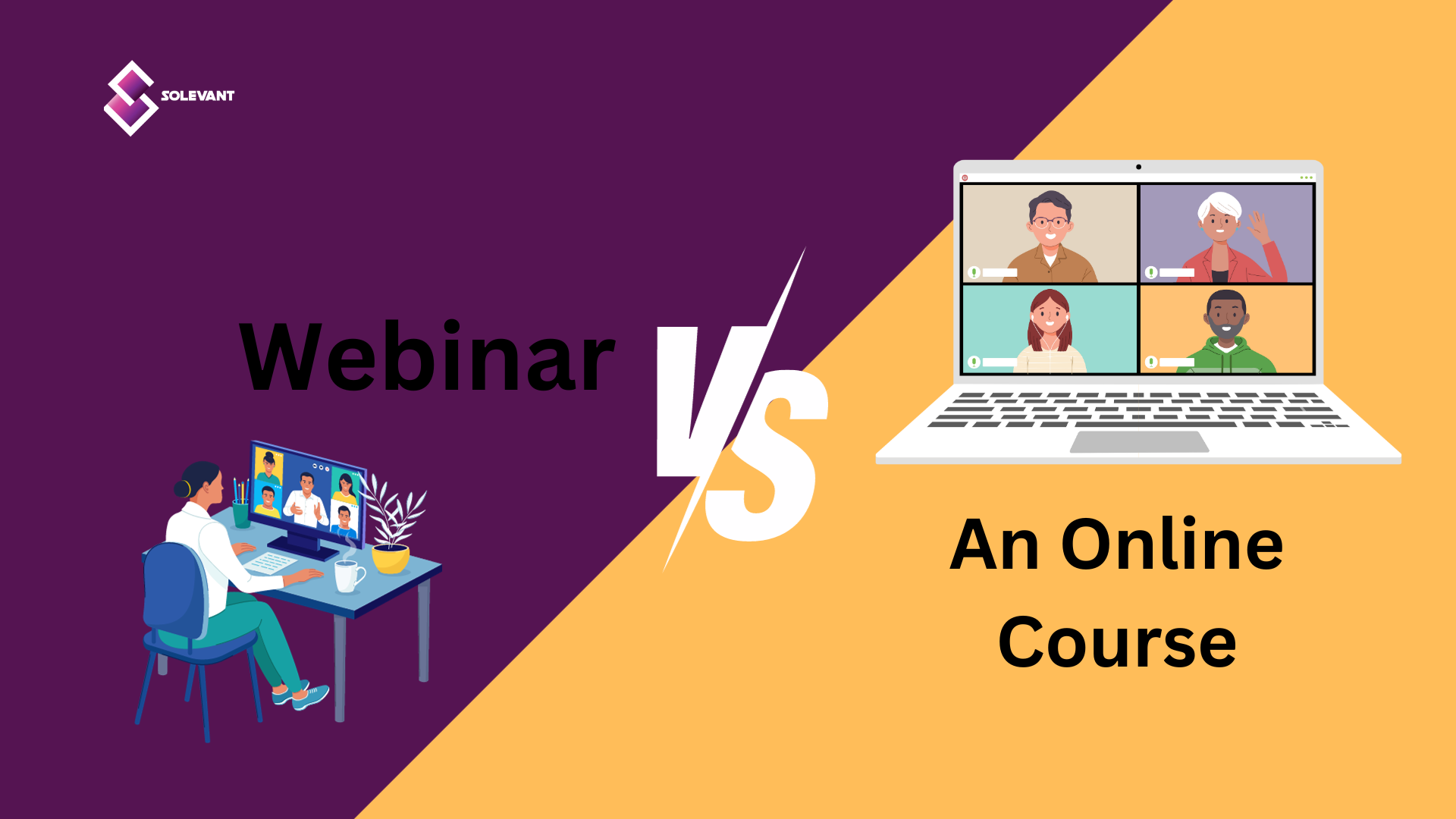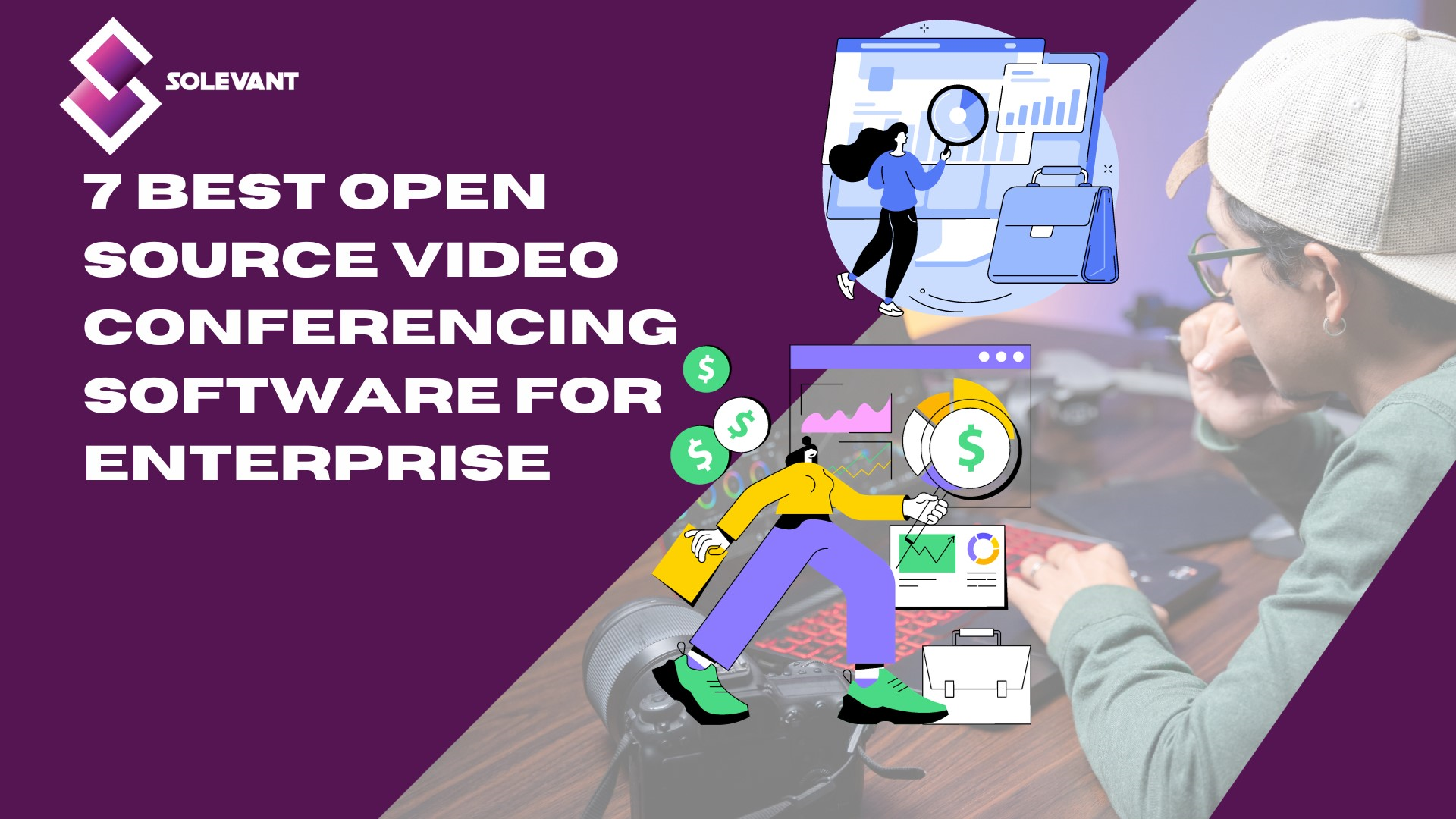
Mastering Workplace Communication: Key Skills For Success
Unlock the art of workplace communication with our comprehensive guide. Elevate your skills for greater effectiveness in professional interactions.
Home » Communications & Media » Page 3

Unlock the art of workplace communication with our comprehensive guide. Elevate your skills for greater effectiveness in professional interactions.

Explore the top 10 countries offering architects the highest salaries.

Experiencing technical glitches during your webinar? Learn effective troubleshooting strategies to keep your online event running smoothly.

Explore the distinctions between webinars and online courses and decide which learning format suits your needs, from interactivity to content delivery.

Discover the steps to create on-demand, automated webinars for seamless, evergreen content delivery and unlock the power of webinars with this comprehensive guide.

Unlock the secrets to crafting compelling webinars with our guide, covering content creation, engagement strategies, and technical tips for an amazing online presentation.

Webinars that convert require skill and strategy. Learn the top 10 tips for engaging and persuasive presentations that captivate your audience and drive conversions.

Explore a step-by-step guide on setting up automated webinars with Zoom. Elevate your online presentations and engage your audience effectively.

Searching for the ideal video conferencing software for your enterprise? Look no further! This article presents a comprehensive list of the 7 best open-source video conferencing solutions.

Web conferencing and video conferencing differ in scope and usage. Understanding these distinctions is vital for optimizing communication within a business or organization.
Communications and Media Software is an essential tool for professionals working in the field of communication and media. This software serves a variety of purposes, facilitating seamless operations and enhancing efficiency across different aspects of the communication and media industry.
One of the primary functions of Communications and Media Software is to streamline communication processes. It provides a centralized platform for messaging, collaboration, and information sharing, fostering real-time communication among team members. This helps in improving coordination and ensuring that everyone involved is on the same page.
In addition to communication management, this software often includes features for media content creation and editing. It offers tools for designing, editing, and organizing various media elements, such as images, videos, and audio. This functionality is particularly valuable for content creators, editors, and media professionals who need efficient and user-friendly tools to produce high-quality content.
Another key aspect of Communications and Media Software is its role in social media management. It provides tools for scheduling posts, monitoring social media engagement, and analyzing performance metrics. This is crucial for individuals and businesses looking to maintain an active and effective presence on social media platforms.
Furthermore, this software often integrates with analytics tools, allowing users to track and analyze the performance of communication and media campaigns. By providing insights into audience engagement, reach, and other relevant metrics, the software enables professionals to make data-driven decisions and refine their strategies for better results.
Overall, Communications and Media Software plays a pivotal role in optimizing communication processes and enhancing media-related tasks. Whether it’s managing internal communications, creating compelling media content, or analyzing campaign performance, this software is a valuable asset for professionals in the dynamic and ever-evolving field of communication and media.
Let’s explore the various types of software that fall under these categories, breaking them down for a clearer understanding.
Instant messaging apps are ubiquitous in today’s communication landscape. They facilitate real-time text, voice, and video conversations. Examples include WhatsApp, Telegram, and Slack, which cater to personal, professional, and team communication needs.
Email remains a fundamental form of communication in both personal and business contexts. Email clients such as Microsoft Outlook, Gmail, and Thunderbird provide platforms for sending, receiving, and organizing emails.
With the rise of remote work, video conferencing tools have become essential. Platforms like Zoom, Microsoft Teams, and Google Meet enable virtual face-to-face meetings, fostering collaboration among team members across different locations.
VoIP software allows voice communication over the internet. Skype, Viber, and Discord are examples of VoIP applications that enable users to make voice calls, conduct conferences, and exchange messages.
Graphic design software is crucial for creating visual content. Adobe Photoshop, Illustrator, and Canva are popular tools used for designing graphics, illustrations, and other visual elements.
Video editing software empowers users to edit and enhance video content. Programs like Adobe Premiere Pro, Final Cut Pro, and iMovie provide a range of features for professional and amateur video editing.
Audio editing software allows manipulation and enhancement of audio files. Audacity, Adobe Audition, and GarageBand are examples of tools used for tasks like editing, mixing, and mastering audio tracks.
Social media management tools streamline the process of managing multiple social media accounts. Hootsuite, Buffer, and Sprout Social help schedule posts, track analytics, and engage with audiences across various platforms.
One of the primary benefits of Communications Software is its ability to facilitate efficient information exchange. Whether it’s emails, instant messaging, or video conferencing, these tools streamline communication, fostering quick and effective collaboration among team members or individuals.
Communication software is a linchpin for collaborative efforts. Features like shared documents, real-time editing, and project management tools bring teams together, enabling them to work seamlessly, even when physically dispersed. This leads to improved productivity and project outcomes.
In today’s globalized landscape, Media Software ensures that information reaches audiences worldwide. It enables organizations to share news, entertainment, or educational content across borders, contributing to a more interconnected and informed global community.
Media Software allows for multichannel broadcasting, ensuring that content can be disseminated through various platforms. From traditional broadcasting to social media and streaming services, this versatility maximizes reach and engagement, catering to diverse audience preferences.
For news organizations and media outlets, real-time reporting is a game-changer. Communication tools integrated into media software empower journalists to share updates as events unfold. This immediacy enhances the relevance and impact of news reporting.
Interactive features embedded in Media Software enhance audience engagement. From live chats during broadcasts to social media interactions, these tools enable content creators to connect with their audience, fostering a sense of community and loyalty.
Media Software often includes analytics tools that provide valuable insights into audience behavior. By analyzing metrics such as viewership, click-through rates, and engagement levels, organizations can make informed decisions to optimize content and communication strategies.
Let’s delve into the various pricing options available on the market.
Many communications and media software providers offer subscription-based pricing models. Under this approach, users pay a recurring fee, typically on a monthly or annual basis, to access the software and its features.
This model often provides flexibility, allowing businesses to scale their usage up or down based on their needs. It’s a popular choice for those who prefer predictable and manageable budgeting.
Tiered pricing structures are common in the communications and media software landscape. Providers offer different packages or tiers with varying levels of features and capabilities. This allows businesses to choose a plan that aligns with their specific requirements and budget constraints.
The tiered approach is beneficial for organizations with diverse needs, as they can opt for a plan that suits their current demands while having the option to upgrade as they grow.
Some communications and media software providers adopt a usage-based pricing model. In this scenario, businesses are charged based on their actual usage or consumption of the software.
This can be advantageous for companies with fluctuating needs, as they only pay for what they use. However, it’s essential for users to monitor their usage closely to avoid unexpected costs.
To give potential customers a taste of their offerings, many software providers offer free trials or freemium versions of their products. Free trials typically allow users to explore the software’s features for a limited period before committing to a paid plan.
Freemium models offer a basic version of the software for free, with the option to upgrade for access to premium features. These approaches enable businesses to assess the software’s suitability before making a financial commitment.
For larger enterprises with unique and complex requirements, some communications and media software providers offer customized enterprise solutions.
Pricing for these solutions is often tailored based on factors such as the scale of deployment, specific features needed, and ongoing support services. While these solutions may involve a higher upfront cost, they are designed to meet the specific demands of large organizations.
Communication software is widely used by individuals for personal connections. Messaging apps, social media platforms, and video conferencing tools are essential for staying in touch with friends, family, and colleagues. Whether it’s sending a quick message or conducting a virtual meeting, these tools have become integral to everyday communication.
In the business world, communication and media software is a cornerstone for internal collaboration and external outreach. Businesses utilize email systems, instant messaging, and video conferencing solutions to facilitate communication among team members.
Additionally, media software assists in content creation, distribution, and marketing, allowing enterprises to connect with their target audiences effectively.
For the media and entertainment sector, specialized software is essential for content creation, editing, and distribution. Video editing software, graphic design tools, and content management systems are widely used to produce high-quality multimedia content. Streaming services also rely on sophisticated software to deliver content seamlessly to users worldwide.
In the realm of journalism and publishing, communication software is crucial for news gathering, editing, and dissemination. Journalists use collaboration tools to coordinate their efforts, and publishing software helps in the layout and distribution of newspapers, magazines, and online articles.
Communication and media software are indispensable for advertising and marketing professionals. These tools aid in designing campaigns, creating multimedia content, and analyzing audience engagement. Social media management platforms, email marketing software, and analytics tools play a pivotal role in optimizing marketing strategies.
Educational institutions utilize communication software for both administrative purposes and interactive learning experiences. From email communication among staff to virtual classrooms and online collaboration tools, these applications enhance communication and facilitate remote learning.
In the healthcare sector, communication software is used for patient record management, telemedicine consultations, and internal communication among healthcare professionals. This technology contributes to streamlined operations and improved patient care.
Government agencies and public services use communication software for efficient internal communication and public outreach. From managing official emails to disseminating information through various media channels, these tools help in maintaining transparency and connecting with citizens.
Here are some popular software products that empower businesses in these sectors:
Twilio is a cloud communications platform that enables developers to embed voice, messaging, and video capabilities into applications. It’s widely used for building communication solutions, including interactive voice response (IVR) systems, two-factor authentication, and messaging applications.
Zoom has become synonymous with video conferencing and online collaboration. It offers a robust platform for virtual meetings, webinars, and remote collaboration, making it a go-to choice for businesses and individuals around the world.
Slack is a popular team collaboration platform that facilitates communication within organizations. It offers channels for organized discussions, direct messaging, file sharing, and integrations with various third-party apps, making it a central hub for workplace communication.
Microsoft Teams is an integrated collaboration platform within the Microsoft 365 suite. It combines chat, video conferencing, file storage, and application integration, providing a comprehensive solution for teamwork and communication in the business environment.
Viber is a messaging and voice-over-IP (VoIP) app that allows users to make free calls, send texts, and share multimedia content. It’s popular for its user-friendly interface and is widely used for personal and business communication.
Adobe Premiere Pro is a professional video editing software widely used in the media and entertainment industry. It offers advanced editing features, supports various video formats, and integrates seamlessly with other Adobe Creative Cloud applications.
Salesforce Marketing Cloud is a comprehensive digital marketing platform that includes tools for email marketing, social media management, advertising, and analytics. It helps businesses create and manage engaging marketing campaigns across multiple channels.
| Feature | Description |
| Content Management | Efficiently organize, create, edit, and publish digital content across various channels, including text, images, and multimedia. |
| Multi-Channel Publishing | Distribute content seamlessly across diverse communication channels, such as websites, social media, and email, ensuring consistent messaging. |
| Social Media Integration | Integrate with popular social media platforms for content sharing, engagement tracking, and social analytics. |
| Audience Segmentation | Segment target audiences based on demographics, behaviors, or preferences to tailor content and communications for specific groups. |
| Digital Asset Management | Centralize and manage digital assets, including images, videos, and documents, to streamline content creation and distribution. |
| Broadcast and Streaming | Facilitate live and on-demand streaming of audio and video content to reach a wider audience through webinars, podcasts, or live events. |
| Advertising Management | Manage and optimize advertising campaigns, including ad placement, tracking, and performance analytics for various media channels. |
| Analytics and Insights | Utilize analytics tools to gather insights into audience behavior, content performance, and campaign effectiveness. |
| Subscriber Management | Manage and track subscribers, providing features like subscription plans, user authentication, and personalized content recommendations. |
| User Engagement Tools | Implement features like polls, surveys, comments, and social sharing to enhance user engagement with content and media. |
| Monetization Strategies | Support various monetization models, such as subscriptions, pay-per-view, and advertising, to generate revenue from content and services. |
| Mobile App Integration | Develop and integrate mobile applications for enhanced accessibility, allowing users to consume content on the go. |
| Personalization | Deliver personalized content recommendations and experiences based on user preferences, behavior, and historical interactions. |
| Collaboration Tools | Enable collaboration among content creators, editors, and other team members through features like version control and real-time editing. |
| Integration | Description |
| Email Marketing Platform | Integration with an email marketing platform for targeted communication and promotional campaigns. |
| Social Media Management | Seamless connection with social media management tools for posting, scheduling, and analyzing social media content. |
| Customer Relationship Management (CRM) | Integration with CRM software to manage and analyze customer interactions, enhance relationships, and track communications. |
| Content Management System (CMS) | Integration with a CMS for efficient content creation, publishing, and management across various platforms. |
| Broadcasting Tools | Integration with broadcasting software for live streaming, podcasting, or video production. |
| Analytics and Reporting | Integration with analytics tools to track and analyze the performance of communication and media content. |
| Advertising Platforms | Connects with advertising platforms for managing and tracking digital advertising campaigns. |
| Collaboration Tools | Integration with collaboration tools for seamless communication and project management within teams. |
| Media Monitoring | Integrates with media monitoring tools to track mentions, trends, and sentiment related to the organization or industry. |
| SMS/Messaging Services | Integration with SMS or messaging services for quick and direct communication with customers or audience members. |
| Event Management | Connects with event management software for organizing and promoting events, webinars, or live sessions. |
| Customer Support Software | Integration with customer support platforms for efficient handling of inquiries, feedback, and issue resolution. |
| Podcast Hosting Platforms | Integration with podcast hosting services for managing and distributing podcast content. |
| Webinar Platforms | Connects with webinar platforms for hosting virtual events and engaging with a remote audience. |
| Mobile App Integration | Seamless integration with mobile applications for providing a convenient and accessible communication experience. |
| Data Analytics Platforms | Integration with data analytics platforms for in-depth analysis of audience behavior and preferences. |
One of the primary challenges users may face is network connectivity issues. Unstable internet connections or server problems can lead to disruptions in communication, causing delays or even dropped connections. This can be frustrating for users relying on seamless communication.
Security is a paramount consideration in communications and media software. The risk of unauthorized access, data breaches, or the interception of sensitive information poses a significant threat. Maintaining robust security measures is crucial to safeguarding user data and ensuring privacy.
In a diverse digital landscape, compatibility between different software and devices can be a stumbling block. Users may encounter difficulties in integrating various communication tools or media software, leading to a fragmented experience. Interoperability issues can hinder smooth collaboration.
The user interface design of communications and media software is critical for user adoption. Complex interfaces with a steep learning curve can be a barrier, especially for new users. Software that is not user-friendly may result in confusion and reduced efficiency.
The constant flow of information through communication channels can be overwhelming. Users may find it challenging to manage and prioritize messages, leading to information overload. Striking a balance between staying informed and avoiding unnecessary distractions is key.
No software is immune to technical glitches and bugs. Issues such as freezes, crashes, or unexpected errors can disrupt communication and media functions. Regular software updates and maintenance are essential to addressing these technical hiccups promptly.
Many communication and media platforms rely on third-party services, or APIs. Dependence on external providers introduces the risk of service outages or changes in functionality that may impact the user experience. Understanding and mitigating these dependencies is crucial for software reliability.
In this section, we’ll explore the key trends that are shaping the industry, providing insights into the tools and technologies that are gaining prominence.
The demand for video conferencing tools has skyrocketed, driven by the rise of remote work and virtual collaboration. Innovations in this space include enhanced features like real-time language translation, augmented reality filters, and improved security measures to meet the evolving needs of users.
The streaming industry continues to flourish, with a focus on personalized content delivery. AI-driven algorithms analyze user preferences, viewing habits, and demographics to provide tailored recommendations. This trend not only improves user satisfaction but also contributes to content discovery.
Virtual and augmented reality are making inroads into communications and media. From virtual events and immersive storytelling to AR-enhanced advertising, these technologies are creating more engaging and interactive experiences for audiences.
The deployment of 5G technology is transforming communication infrastructures. Faster and more reliable connectivity opens new possibilities for high-quality video streaming, augmented reality applications, and real-time collaboration.
This shift has implications for both consumers and businesses, influencing how content is created, delivered, and consumed.
Podcasting has experienced a renaissance, becoming a powerful medium for content consumption. The ease of production and accessibility to diverse topics have contributed to the popularity of podcasts. As a result, there is a growing emphasis on podcast creation tools, distribution platforms, and monetization strategies.
The integration of communication tools within social media platforms is on the rise. Ephemeral content, such as disappearing stories and short-form videos, is gaining traction. This trend reflects the changing nature of how people communicate and consume content, emphasizing real-time and authentic interactions.
With a shift towards decentralized workforces, there is a growing need for remote production and collaboration tools in the media industry. Cloud-based solutions, virtual studios, and collaborative editing platforms enable seamless workflows for content creation teams spread across different locations.
The realm of Communications and Media Software encompasses a wide array of tools and services. In this overview, we’ll delve into the key categories and offerings, breaking down the essential software and services related to communication and media.
Messaging apps are fundamental in today’s interconnected world. These applications facilitate real-time communication through text, voice, and video. Popular examples include WhatsApp, Slack, and Microsoft Teams, each tailored for specific communication needs, from casual conversations to professional collaboration.
With the rise of remote work, video conferencing has become indispensable. Platforms like Zoom, Google Meet, and Cisco Webex enable virtual meetings, fostering communication among teams, clients, and partners. These tools often feature screen sharing, chat functionalities, and integrations for seamless collaboration.
Email remains a cornerstone of business communication. Services like Gmail, Outlook, and Yahoo Mail provide efficient and secure means of sending messages, sharing documents, and managing professional correspondence.
Content creation is at the heart of media production. Software like Adobe Creative Cloud, Canva, and Final Cut Pro empowers creators to design graphics, edit videos, and produce visually appealing content for various platforms.
Managing a brand’s presence across social media requires specialized tools. Platforms like Hootsuite and Buffer enable scheduling posts, analyzing performance metrics, and engaging with audiences across multiple social channels.
To reach a wider audience, content needs effective distribution. Platforms like Spotify for audio, YouTube for video, and Kindle Direct Publishing for written content provide avenues for creators to share their work globally.
Frequently Asked Questions on Communications and Media Software